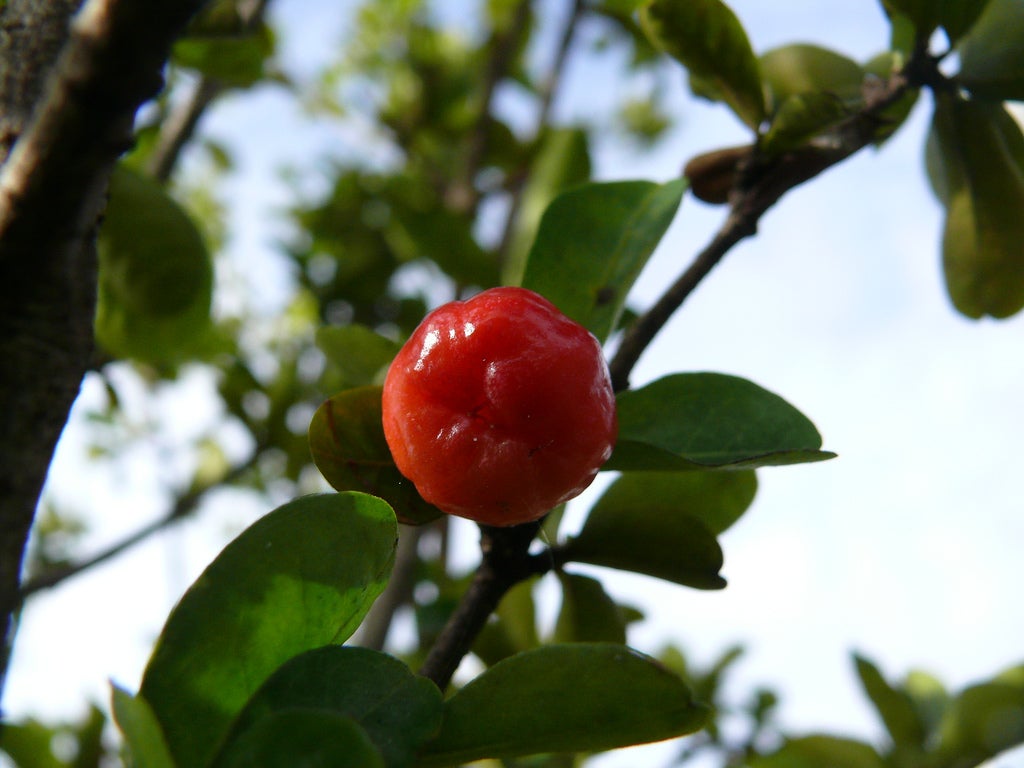Barbados Cherry Information – What Are Barbados Cherries


What are Barbados cherries? The Barbados cherry (Malpighia punicifolia) is known by a number of names, including acerola tree, garden cherry, West Indies cherry, Spanish cherry, fresh cherry, and several others. Barbados cherry is native to the West Indies but has naturalized as far as southern Texas. It is suitable for growing in USDA plant hardiness zones 9b through 11. Read on for more Barbados cherry information and learn how to grow Barbados cherry in your garden.
About the Acerola Tree
Barbados cherry, or acerola, is a large, bushy shrub or small tree that reaches mature heights of about 12 feet (4 m.). This attractive shrub produces thick, bright green leaves. Small, pinkish lavender flowers bloom from spring to fall, and may pop up year-round in warmer climates – usually after irrigation or a rainfall.
Acerola tree blooms are followed by shiny, bright red fruit shaped much like miniature apples or tiny cherries. Due to its high ascorbic acid content, the tart, delicious fruit is often used to manufacture vitamin C tablets.
Tips on Growing Barbados Cherries
Getting Barbados cherry seeds to germinate can be difficult. Purchase a small tree, if possible, as germination, if it occurs at all, can take at least 6 to 12 months.
Once established, growing Barbados cherry is relatively easy. Locate the shrub/tree in partial shade and moist, well-drained soil.
Young Barbados cherry trees need regular water, but mature plants are quite drought tolerant.
Fertilize Barbados cherry trees twice a year for the first four years, then cut back on feeding as the they mature.
Sign up for the Gardening Know How newsletter today and receive a free copy of our e-book "How to Grow Delicious Tomatoes".
Harvest Barbados cherries when the fruit is fully ripe. Wear gloves, though, because the fuzz on the stems and leaves can irritate the skin, especially when the tree is young.

A Credentialed Garden Writer, Mary H. Dyer was with Gardening Know How in the very beginning, publishing articles as early as 2007.